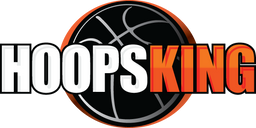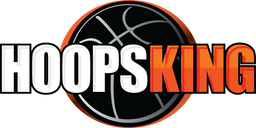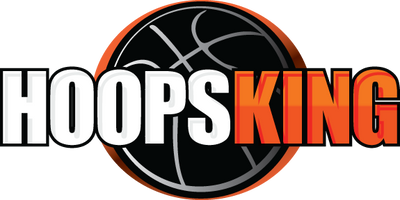Searching for a method to augment your vertical leap? Resistance bands are an effective tool for improving your jumping ability. With the right exercises and proper technique, resistance bands can help you reach new heights in no time. By utilizing resistance bands, this blog post will explore how athletes can use them to increase their vertical jump capabilities. We'll also provide 10 exercises that use these tools effectively as well as advice on frequency of workouts and combining weights with resistance band training. So if you're ready to take your game up a notch, read on.
Table of Contents:
- Benefits of Using Resistance Bands for Vertical Jump Training
- Exercises to Increase Vertical Jump with Resistance Bands
- Frequency of Vertical Jump Workouts
- Weight Training and Vertical Jumping
- Combining Weights and Resistance Bands for Vertical Jumping
- FAQs in Relation to Increase Vertical Jump With Resistance Bands
- Conclusion


Exercises to Increase Vertical Jump with Resistance Bands
Banded Squats:
This exercise is a great way to increase the vertical jump height of basketball players. A resistance band should be looped around both legs and held in place with one hand while executing the squats for added tension, which will work to build up leg muscles needed for powerful jumps. The band will provide extra resistance for each squat, helping to strengthen leg muscles that are necessary for explosive jumping movements.
Knee Flexion:
Knee flexion exercises involve using a resistance band to perform knee extensions and curls from a standing position or seated on the floor. These exercises are key for producing forceful leaps while playing basketball, as they help bolster the strength of both the quadriceps and hamstrings.
This is an exercise that targets the muscle groups used in jumps, like hip extension, knee bending, and ankle dorsiflexion. To perform this exercise correctly, stand on one end of the band while holding it securely around both knees with both hands at chest level or slightly lower than shoulder level depending on how much tension you want from the band during each rep. Slowly bend down into a squat position then drive upwards explosively using only your legs before returning back down again into a squat position – repeat this motion until desired reps have been completed for maximum results.
Squats:
Squats are one of the most effective exercises for increasing leg strength and power. When doing squats with a band, keep your spine erect and concentrate on pressing through the heels while maintaining strain in the band for all of the motion. This will help build up maximal strength in your legs, which is essential for improving vertical jump height.
As an advanced-level professional, you should really push yourself beyond your limits and combine multiple different motions simultaneously such as lateral shuffles combined with squats and pull-ups. This will give you the intensity not found in traditional weightlifting since bands offer variable resistances meaning lighter weights don't always mean easier workouts – instead users must focus heavily on controlling tempo during each rep to maximize effectiveness from these types of drills. Keywords: coordination, muscle groups, hip extension, knee flexion, plyometric drills, explosive athlete.

Squat Jumps:
This exercise is great for building lower body strength and explosiveness, while also improving vertical jump height. To perform this exercise, stand with feet hip-width apart and a resistance band around the thighs just above the knees. Bend at the hips and knees to lower into a squat, then use your arms for momentum as you jump up explosively. On touchdown, slightly flex the legs to cushion your return.
Lateral Band Walks:
This exercise helps improve lateral movement which can be beneficial for basketball players who need quick changes of direction when playing defense or offense on the court. To do this exercise, place a resistance band around both ankles and walk sideways from one side of the room to the other while keeping tension on the band throughout the entire movement pattern (keep your feet facing forward). Make sure to keep the torso upright and maintain good posture during the entire set.
For the advanced professional, split squats are a great way to develop single-leg strength which can translate into greater power production when leaping off one foot during drills or games such as dunks and layups. Stand with feet parallel and two feet apart so that toes point straight ahead; wrap a resistance band around the back thigh just above the knee joint; descend slowly until the back knee nearly touches the floor then spring up by pushing through the heel of the leading leg (front foot). Execute three sets per side with ten repetitions in each set. Keywords: Split Squats, Resistance Band, Single Leg Strength, Power Production, Leaping Off One Foot.
Jump Rope Skips:
Jump rope skips are an excellent way to increase speed and agility while also improving coordination between upper/lower body movements which is essential for explosive athletes looking to maximize their vertical leap potential. Begin by standing tall with core engaged; use hands lightly against sides as if holding onto imaginary rope; start skipping forward quickly but stay light on toes so that only balls of feet touch the ground during each skip repetition - aim for 20 jumps per set before taking a rest break.
Jumping rope is an effective way to coordinate your muscle groups, involving movements like hip extension and knee flexion. As you gradually increase the difficulty over time (such as upping the revolutions per minute), you'll be able to generate more force faster and become an explosive athlete capable of producing high-power outputs in short bursts. Keywords: coordination, muscle groups, hip extension, knee flexion, plyometric drills, explosive athlete
As an advanced-level professional, it is important to push yourself beyond your limits and incorporate speed training into your regular workout routine. This includes mastering proper mechanics, agility, reaction times, and acceleration in order to maximize the athletic potential for events requiring quick bursts of energy such as sprinting or hopping over hurdles. By honing the right footwork to accelerate quickly off the line while maintaining balance, you will benefit immensely in terms of better overall mobility which allows you to move like a pro across any court or field. Keywords: coordination, muscle groups, hip extension, knee flexion, plyometric drills , explosive athlete , agility , reaction times , acceleration
With the right exercises and proper form, coaches can use resistance bands to help their players increase their vertical jump. By following a regular schedule of workouts with adequate rest periods in between sessions, coaches will be able to see even greater improvements in vertical jumps over time.
Frequency of Vertical Jump Workouts
When it comes to vertical jump training with resistance bands, frequency is key. For maximum effectiveness, athletes should perform vertical jump training with resistance bands three or more times a week. Doing more than that can be beneficial, but there needs to be adequate rest and recovery time in between workouts so muscles don’t become overworked or fatigued.
The intensity of each workout will also depend on the athlete's current fitness level and how much they have trained previously. Beginners should start off slowly with lighter bands and fewer reps per exercise, while experienced athletes can increase the weight of their band as well as the number of repetitions per set.
To maximize results from your vertical jump training program, coaches need to incorporate different types of exercises into their routines. This could include plyometric drills such as box jumps or depth jumps; bodyweight exercises like squats or lunges; and even core work like planks or mountain climbers. Each type of exercise targets different muscle groups which helps build strength and power for an improved vertical jump height.
Another important factor when considering frequency is rest days in between workouts. Athletes need time to recover from intense physical activity otherwise they risk injury due to fatigue or overtraining syndrome (OTS). Rest days allow muscles time to rebuild themselves stronger than before so they are ready for the next session without any issues related to soreness or tightness that could potentially lead to injuries down the line if not addressed properly.
Finally, coaches should make sure they track progress by having athletes record their performance after each session - this includes tracking things like total reps completed during a workout, sets performed with specific weights/bands used, etc. By keeping records of these metrics you can easily see what areas may need improvement which will help keep your athletes motivated throughout their journey toward achieving greater heights.
The frequency of Vertical Jump Workouts should be determined by the individual coach, depending on their specific goals and objectives. Weightlifting is a critical part of any vertical leap regimen, as it can boost strength and power for improved leaping capability.
Weight Training and Vertical Jumping
Weight training is a must for any vertical jump regimen, aiding in increasing leg strength and power to optimize jumping performance. When combined with resistance bands, it can help basketball coaches maximize the results they see from their athletes. Weight training helps to increase strength and power in the legs, which are both important for a successful vertical jump. Resistance bands provide additional resistance that helps to further develop those muscles used during jumping movements.
For optimal vertical jump training, focus on exercises that target specific muscle groups such as squats, lunges, step-ups, and calf raises using weights and resistance bands with proper form and technique. These exercises should be done with proper form and technique so as not to put undue strain on other areas of the body or risk injury. It's also important to use appropriate weight levels based on individual fitness level and goals; too light or too heavy weights can lead to poor results or even injury if not monitored properly by experienced coaches.
For optimal gains in height, two days of vertical jump exercises per week should be the goal when combining weights and resistance bands. It's important to keep an eye on individual fitness levels to ensure that appropriate weight levels are being used; going too light or heavy can have detrimental effects. Additionally, proper form and technique must be utilized during these workouts in order to avoid injury or subpar results due to overtraining or fatigue from excessive repetition without sufficient rest periods between sessions.
Weightlifting is a key element of any vertical leap regimen, helping athletes reach their highest level of performance. Combining weights with resistance bands offers a unique approach to further enhance your vertical jump, allowing you to gain more height than ever before.

Combining Weights and Resistance Bands for Vertical Jumping
Combining weights and resistance bands for vertical jumping is an effective way to increase your explosiveness on the court. Weights are great for building strength, while resistance bands help improve power. By combining the two, you can gain a comprehensive workout that will enhance both strength and power.
Resistance bands provide constant tension throughout the range of motion when performing exercises such as jump squats or single-leg jumps. This helps to build explosive power in the legs and hips which is essential for increasing your vertical jump height. Additionally, adding weight plates to exercises like these increases muscular strength which will also contribute to improved performance in this area.
When it comes to the frequency of workouts, there’s no one size fits all answer as everyone’s body responds differently depending on their individual goals and needs. However, generally speaking, it’s recommended that athletes perform weighted jumps 2-3 times per week with at least 48 hours of rest between sessions. For those using only resistance bands without any added weight then 3-4 days per week should suffice with plenty of rest time in between sets and reps to ensure optimal recovery periods are met each time so muscles have adequate time to repair themselves before being worked again.
Weight training has been a cornerstone for improving vertical jump performance, yet many coaches fail to recognize the power of combining weights with resistance bands. This combination creates an effective synergy that activates muscle fibers more efficiently than traditional free-weight exercises alone. With this comprehensive approach, athletes can unlock their full potential and reach new heights. Keywords: Weight Training, Resistance Bands, Synergy, Muscle Fibers, Comprehensive Approach
By combining weights and resistance bands during vertical jumping drills, you will get the best of both worlds; increased strength from heavier loads as well as enhanced power output due to constant tension throughout each rep, resulting in improved overall performance on game day.
FAQs in Relation to Increasing Vertical Jump With Resistance Bands
Can resistance bands increase vertical jumps?
Yes, resistance bands can increase vertical jumps. Resistance band exercises are a great way to target the muscles used in jumping and improve overall strength and power. Regularly using resistance bands can help athletes develop greater control of their movements and enhanced explosiveness when they leap. Additionally, resistance bands provide an opportunity for dynamic stretching which helps warm up the body before exercise and prepare it for more intense activity such as jumping.
How do you increase vertical jumps with bands?
Increasing vertical jumps with bands is an effective way to improve performance. Connecting a band around the midsection and executing activities, for example, hops, squats, lunges, and other dynamic developments can help competitors to fabricate quality in their lower body muscles while additionally expanding force yield. Additionally, using bands to perform resisted running drills will help build explosive speed and agility. Coaches should focus on proper form during these exercises to ensure that maximum benefit is achieved from each repetition. With consistent practice over time, basketball players will see significant gains in their vertical jump height.
Do resistance bands increase explosiveness?
Yes, resistance bands can increase explosiveness. They are a great tool for coaches to use when training athletes as they help build strength and power in the muscles that support jumping ability. Resistance bands also provide feedback on form and technique, allowing coaches to adjust their athlete’s movements accordingly. Ultimately, using resistance bands correctly helps improve an athlete’s performance by increasing their vertical jump height and overall explosiveness on the court.
What is the most effective way to increase your vertical jump?
To increase vertical jump, a combination of strength training and plyometrics exercises is essential to build explosive power for jumping. Strength training should target the legs, core, and glutes to generate explosive power for leaping. Plyometrics involve quick bursts of intense movements such as squat jumps, box jumps, tuck jumps, or single-leg hops that will help develop fast-twitch muscle fibers which are necessary for increasing height off the ground. Additionally, stretching before any workout can improve your range of motion allowing you to achieve greater heights when jumping.
Conclusion
In conclusion, vertical jump training with resistance bands can be an effective way to increase your vertical jump. Resistance bands provide a unique challenge and help you target specific muscles for maximum benefit. The exercises provided in this article are just the beginning of what is possible when it comes to using resistance bands for increasing your vertical jump. With the right approach and commitment, these instruments can help you reach higher heights in your sport.
Take your vertical jump to the next level with HoopsKing.com's resistance band training and coaching program! Our experienced coaches will help you reach new heights in no time.
Elevate Your Coaching Game with Our Top-Notch Basketball Coach Resources and Lead Your Team to Victory!
- How We Can Help Your Become a Better Coach
- The Complete Guide to Coaching Basketball
- Basketball Training Videos with the Best Basketball Trainers
- Basketball Coaching Boards
- Basketball Coaching Equipment
- Coach by Last Name: Looking for a particular basketball coach's instructional DVD?
- Need Basketball Coach Gifts Ideas for your Favorite Coach?




